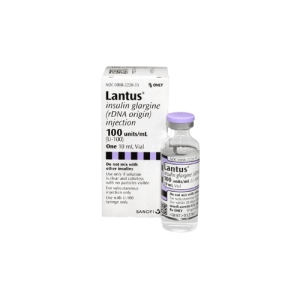What is type 2 diabetes (T2D)?
Type 2 diabetes is a chronic medical condition which occurs when the body becomes resistant to insulin or cannot produce enough insulin. Insulin is a natural hormone produced by the beta cells in the pancreas. This hormone works by transporting glucose from the bloodstream to the cells of the body. Glucose is a form of sugar, which is a main source of energy for the body. When you eat carbohydrate-rich foods, glucose is absorbed into the bloodstream. When blood sugar levels rise, the body will stimulate the pancreas to release insulin which helps absorbe and process glucose into the body’s cells to be used or stored for energy. Without insulin, glucose cannot enter the body cells. If not treated, high blood sugar levels can lead to health problems such as blindness, loss of limbs, kidney or nerve damage. To prevent these long-term health complications, it is important you identify the early signs of T2D. This will help with proper diagnosis and treatment of this medical condition. Many people with T2D may be able to control their blood sugar levels through regular exercise and diet. However, if diet and exercise do not work on their own, oral diabetes medications such as metformin can be prescribed.
Early signs of type 2 diabetes
The early signs of type 2 diabetes are not always obvious. This explains why more than 8 million people with T2D in the United States go undiagnosed. The early signs of T2D are difficult to diagnose because they develop slowly over time.
The following are early signs of type 2 diabetes:
- Frequent urination
- Increased hunger
- Extreme thirst
- Numbness or nerve pain
- Wounds that heal slowly
- Dark skin patches
- Blurred vision
If you suspect that you have early signs of type 2 diabetes, you should talk to your doctor immediately. If diagnosed early, high blood sugar levels experienced in T2D can be controlled with proper treatment. If left untreated, T2D can become life threatening.
Early signs of T2D in men
Type 2 diabetes is the most common form of diabetes. 90 to 95 percent of men with diabetes in the United States are type 2 diabetics. Any man can develop T2D; however, this medical condition mostly affects men who are smokers, overweight or obese, lacking physical activity or are related to someone with T2D. Men older than 40 years old are likely to develop T2D as their bodies become less tolerant to glucose over time.
The following are early signs of T2D in men:
- Erectile dysfunction
Erectile dysfunction refers to the inability to achieve or maintain an erection sufficient to engage in sexual intercourse. This could occur as a result of different factors, including stress, medication, kidney disease, high blood pressure, or smoking. Men with type 2 diabetes are at risk of developing erectile dysfunction as an early sign of this medical condition.
- Recurrent genital thrush
In case of high blood sugar levels, genital thrush may occur in men who are at risk for developing T2D. Symptoms of genital thrush include itchiness, swelling or redness around the penis head, unpleasant odor or soreness during sex.
- Retrograde ejaculation
Some men with diabetes can experience retrograde ejaculation as an early sign of T2D. This may result in less semen being released during ejaculation.
- Reduced muscle mass
Men with type 2 diabetes can experience unexplained loss of muscle mass. This is because glucose is building in the blood stream rather than being used for energy, so the body starts to break down muscle and fat for energy. Reduced muscle mass can affect men with T2D that have gone undiagnosed for long periods of time.
Early signs of T2D in women
Women with type 2 diabetes can experience most of the common early signs of T2D. However, there are certain signs and symptoms which are unique to women with T2D, including the following:
- Female sexual dysfunction
Women with T2D can experience sexual dysfunction with symptoms such as pain during sexual intercourse, or lack of sex drive. This is because high blood sugar can affect the supply of blood which causes issues with arousal.
- Polycystic ovary syndrome
Polycystic ovary syndrome or PCOS is a condition where the ovaries may develop bigger cysts than are normal. Symptoms of PCOS include weight gain, depression, acne and irregular periods. This can cause infertility in women, as well as insulin resistance that results in high blood sugar levels.
- Urinary tract infections
Women with T2D have a higher risk of getting urinary tract infections, or UTIs. Urinary tract infections occur when bacteria get into the urinary tract. This may result in burning sensations and pain during urination.
Early signs of T2D in children
Research shows that approximately 40 percent of children with type 2 diabetes do not show early signs of this medical condition. The signs and symptoms of T2D in children are likely to develop gradually with time. If you notice any of the following early signs of T2D, you should take your child to see a doctor.
- Fatigue
- Blurred vision
- Weight loss
- Frequent urination
- Increased thirst
Disclaimer: Please note that the contents of this community article are strictly for informational purposes and should not be considered as medical advice. This article, and other community articles, are not written or reviewed for medical validity by Canadian Insulin or its staff. All views and opinions expressed by the contributing authors are not endorsed by Canadian Insulin. Always consult a medical professional for medical advice, diagnosis, and treatment.














